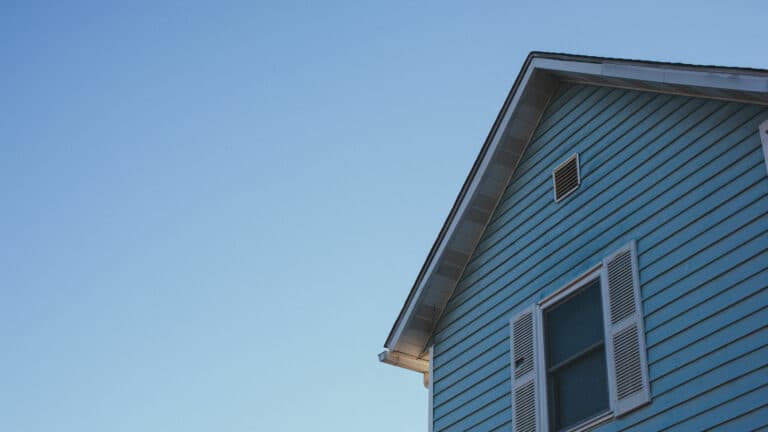As you read through our homebuyer’s guide, you may wonder which home loans could work best for you.
A conventional loan, the most common type of non-government backed loan, requires you to have a minimum credit score of 620. Your credit score is a three-digit number that comes from your credit reports and creditors (such as your credit card company or student loan company). It reports on how well you make your debt payments to them. You can check your credit at annualcreditreport.com.
If you know you’ll fall short of the 620 credit score benchmark, you may want to turn to a different type of loan, such as an FHA loan.
What is an FHA loan? This article goes over FHA loans in detail to help you determine whether this type of mortgage might work for you.
What’s an FHA Loan?
An FHA loan is a government-backed mortgage insured by the Federal Housing Administration (FHA), a department under the jurisdiction of the Department of Housing and Urban Development (HUD). FHA loans require a minimum 3.5% down payment and a credit score of at least 500.
Your loan term can range from 15 to 30 years, and you can get a fixed or variable interest rate for your FHA loan. Fixed interest rates stay the same for the life of the loan, while variable interest rates (also called “adjustable” or “floating”) change throughout the loan term. They fluctuate over time because they are based on an underlying benchmark interest rate that changes based on the market.
As a prospective homebuyer, you may want to choose an FHA loan if you don’t have a particularly high credit score or your savings doesn’t allow for a larger down payment.
How FHA Loans Work
FHA loans are backed by the Federal Housing Administration and you still get an FHA loan through a lender authorized by the FHA to provide such loans. The lender can agree to riskier terms (such as a lower down payment and a lower credit score) because the FHA will pay your lender if you default on the loan.
In return, FHA borrowers must pay two types of FHA mortgage insurance premiums: An upfront mortgage insurance premium and an annual mortgage insurance premium.
- Upfront mortgage insurance premium (UFMIP): UFMIP refers to a required upfront premium collected alongside your closing costs. This upfront fee costs 1.75% of your base loan amount.
- Annual mortgage insurance premium (MIP): You’ll also pay mortgage insurance premium payments ranging between 0.45% to 1.05% annually, depending on the size of your down payment and your loan term. You usually pay these in monthly installments, which are rolled into your mortgage payments. However, it’s possible to pay them annually, through a single payment upfront or through a split-premium payment option. The split-premium payment option takes a hybrid approach — you pay both an upfront fee and monthly payments.
Can you cancel MIP?
Yes, if you pay a 10% down payment. However, you must continue to pay premiums for 11 years. Your servicer will cancel them automatically after that length of time. If you put down less than 10%, you’ll pay the annual mortgage insurance premium for the life of the loan.
Pros and Cons of FHA Loans
You may want to know the pros and cons of an FHA mortgage before you determine whether it’s the best option for you.
Advantages of FHA Loans
FHA loans allow you to:
- Have a lower credit score: As long as you have a credit score of at least 500, you may qualify for an FHA loan. This credit score requirement is lower compared to other loan types.
- Make a lower down payment. Your down payment is a percentage of the purchase price of a home and is the amount you pay upfront. FHA loans allow you to put down a minimum of 3.5%.
- Stop renting earlier. If you choose to go the FHA route, you may not have to spend as much time saving for a down payment. If you can’t or don’t want to save a large amount of money, an FHA loan might make sense.
Disadvantages of FHA Loans
Consider a few of the downsides to an FHA mortgage. You:
- Cannot avoid mortgage insurance. You’ll have to pay the upfront mortgage insurance premium and annual mortgage insurance premium. Most FHA loans require MIP for either 11 years or the lifetime of the loan.
- Will have to meet certain property requirements. A home must pass an inspection by meeting minimum safety and security standards.
- Could pay more in the long run. The MIP fee doesn’t go toward equity in your home. You may end up paying less in PMI for a conventional loan because your lender will automatically terminate PMI when your mortgage balance reaches 78% of the purchase price (you have to be current on your last 12 months of payments in order to be eligible.)
Note: You will need to pay a 20% down payment if you don’t want to pay private mortgage insurance (PMI) for a conventional mortgage. PMI is a type of insurance that protects the lender if you happen to default on your loan. (Note that you can still get a conventional loan with less than 20% down, however.)
FHA Loan Limits in 2022
You’ll face maximum FHA loan limits for what you can borrow for an FHA loan based on county property values. In 2022, HUD has established a maximum lending ceiling of $970,800 in high-cost areas. The maximum limit can go down to $420,680 in lower-cost areas.
Take a look at the FHA mortgage limits page to learn about the limits in your area. The page also includes a median sale price value for each area, which HUD uses for loan limit determination.
How to Qualify for an FHA Mortgage
You must meet the following lending guidelines to qualify for a FHA loan. You must:
- Meet certain down payment and credit score requirements. If you plan to put 10% down, you must have a credit score of at least 500 to 579. If you plan to put 3.5% down, you must have a credit score of 580 or higher.
- Have verifiable employment history for the past two years. The FHA doesn’t stipulate exact income requirements, but you must prove that you have steady employment. You’ll need to show your lender pay stubs, W-2s, federal tax returns and bank statements.
- Finance a primary residence with an FHA approved lender. You may not use the home as a second home or rental property. You’ll need to occupy the home within 60 days of closing.
- Undergo an appraisal of the home. An FHA-approved appraiser must complete the appraisal.
- Have a front-end debt ratio of no more than 31% of gross monthly income. This refers to the mortgage-to-income ratio, and you can arrive at that figure by dividing your projected monthly mortgage payment by your monthly gross income.
- Have a back-end debt ratio of no more than 43 percent of gross monthly income. Your back-end ratio, or debt-to-income (DTI) ratio, refers to all your monthly minimum debt payments divided by your monthly pre-tax income.
- Wait one to two years after bankruptcy. You can’t get an FHA loan right away if you’ve had a bankruptcy. You must also wait three years after foreclosure to get an FHA loan.
What to Consider Before Applying for an FHA Loan
Before you apply for an FHA loan, you may want to make sure you know your budget and how much you can afford to put toward a monthly mortgage payment. You could compile your documents, such as pay stubs, W-2s, federal tax returns, bank statements and anything else your lender requires.
You may want to apply for pre-approval at various lenders and compare their offers (between at least three lenders). Mortgage rates, fees and other costs to borrow can vary between providers.
FHA vs. Conventional Loans
Still not sure whether an FHA loan or a conventional loan makes sense for you? Take a look at the comparison chart between FHA and conventional loans below.
| FHA Loans | Conventional Loans | |
|---|---|---|
| Credit Score Minimum | 500 | 620 |
| Down Payment Requirement | 3.5% | 3% |
| Loan Terms | 15 to 30 years | 8 to 30 years |
| Mortgage Insurance Premiums | MIP upfront and throughout the life of the loan (unless you make a down payment of 10% or more — in that case, you’ll only pay MIP for 11 years) | PMI for down payments less than 20% |
| Interest Type | Fixed or variable | Fixed or variable |
Other Types of FHA Loans
You can choose from several types of FHA mortgage loans and FHA loan programs, including 203(k) loans, HECMs, energy efficient mortgages and a graduated payment mortgage program. Let’s take a look at each option.
203(k) Loan
An FHA 203(k) loan allows you to buy a home and “rehabilitate” it, or in other words, make renovations. The minimum loan balance is $5,000 — you cannot borrow less. Furthermore, the total value of the property must still fall within the FHA mortgage limit for the area. You must finish any home improvements or repairs within six months.
View more information about 203(k) loans.
Home Equity Conversion Mortgage (HECM)
A home equity conversion mortgage (HECM) is the FHA’s reverse mortgage program, which enables those 62 and older to withdraw a portion of their home’s equity. In order to get one, you must own the property outright or have paid down most of the home loan, live in the home as your primary residence and not be delinquent on federal debt. You should also be able to pay for property taxes, insurance and other required fees, like homeowners association fees. You will also need to participate in counseling prior to getting a HECM by a HUD-approved counselor.
Learn more about the HECM program.
Energy Efficient Mortgage
FHA’s Energy Efficient Mortgage (EEM) program can help you save money on utility bills by helping you finance energy efficient improvements with your FHA-insured mortgage.
Check out more information about the EEM program.
Graduated Payment Mortgage/Section 245 Program
FHA lenders also offer the Graduated Payment Mortgage program, which offers FHA loans for homebuyers who currently have low to moderate incomes but expect them to increase over five to 10 years. Those with limited incomes can purchase homes with mortgage payments that will grow.
Learn more about the Graduated Payment Mortgage/Section 245 program.
Learn more about hundreds of topics, from refinancing your mortgage to mortgage insurance on our blog.
This post was updated on Feb. 20, 2022 to reflect current FHA loan limits.






